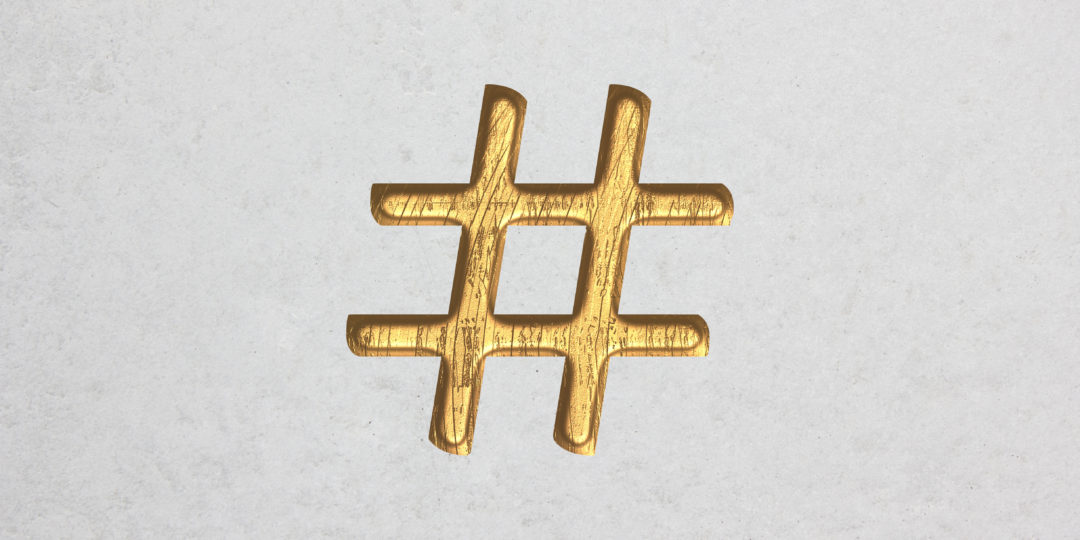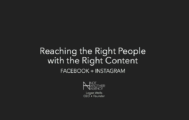#dont #do #this
- Aug 17, 2017
- By Logan Wells
- In Best Practices
- Comments Off on #dont #do #this
Contrary to what you might see in the vast social media landscape, there is actually a method to the madness behind hashtags. While it seems that haphazardly hashtagging words is the most common strategy – understanding the strategy behind why, when, and where you use a hashtag can substantially impact your content’s performance. #gofigure
It is critical to hashtag with a purpose.
Let’s Use Some Hashtags
Hashtags are more than just a word with a pound sign in the front – they bring all conversations with the same topic, dictated by the #, into one feed. So, as a simple example, if someone has an affinity for NYC, they can search social media platforms via #NYC and see all posts with that hashtag in one space. Hashtags are a means to expand the number of people a post may reach. Hashtags can also help determine the amount of interest around a topic as the platform will auto-suggest hashtags once you begin to type one and also tell you the usage volume.
Let’s look at an example – say you want to post something about dogs (we like dogs at LA, in fact, our lead strategist is a Frenchie named Emma!) – you can make sure that your choice of hashtag will generate exposure before committing. Keep in mind that changes like pluralization can make a difference –
Example
#dog 143,356,401 posts
-v-
#dogs 48,964,820 posts
*as of Aug 17, 2017
For whatever reason, certain hashtags trend in shockingly high volumes. If one of these POSITIVELY trending hashtags is relevant to you or your company, then leverage that! This is another way to expand your reach, as well as demonstrate you stay relevant and active. You should keep an ongoing list tracking the success of your hashtags and trending hashtags.
Aside from expanding the audience that you reach, hashtags can be used to develop and/or promote a personal or company voice or brand; however, this needs to be done with care.
When making original hashtags or using pre-existing hashtags, there are few things to keep in mind to avoid major hashtag fails.
1. #susanalbumparty
…How did reading that go? This is an infamous example of a hashtag gone wrong. Make sure you proof your hashtag and ensure that it cannot be read incorrectly in any way. This unfortunate hashtag faux pas could have been avoided by using capitalization.
#SusanAlbumParty
Seems so simple, right? But these mistakes happen all the time. People were not thinking about Susan’s album party… that’s for sure. #nailedit
Not surprisingly, Susan isn’t the only one who had a hashtag accident…
2. #PowerOfTheFirstLady
Make sure your hashtag cannot be used against you in a negative way. Really think about how your hashtag could be twisted because the power of social media is intense, and if something starts trending against you, it may take a little while for the wounds to heal.
In recent times, our First Lady made a futile attempt at using an original hashtag. Good in theory? Sure. Good in reality? Absolutely not. Rather than using the hashtag to support or promote the First Lady, the public took another turn and used it as a bashing mechanism. #oops
3. #myhashtagisbetterthanyours
Avoid, well I’ll just say it, stupid, irrelevant trends.
That hashtag is NEVER better. We’re looking for quality, folks.
Rules of the Game
# DONTs
There are many other ways to annihilate your hashtag game.
- – #if #you #hashtag #every #word #youre #doing #it #wrong.
- – If you use punctuation in a hashtag, you negate the hashtag. #that’s not what #you’re trying to do. Those hashtags would stop at #that and #you, for example.
- – #hashtagsthataretoolongarepointlessandunenjoyabletoread.
- – Don’t put any spaces in your hashtag. If I want to hashtag my company, it is #LoganAshton, not #Logan Ashton.
- – Avoid using ALL CAPS. #IT #LOOKS #HARSH
- – Don’t murder your audience with hashtag overkill. If you have a paragraph of hashtags, then you need to quit that #asap.
# DOs
Now that we know what not to do, here are some things you should do.
- – Make sure your hashtags are simple, short, and easily understood.
- – Capitalize separate words, when it makes sense, to avoid confusion or an unfortunate oversight (let’s not forget #susanalbumparty).
- – Place hashtags where they are appropriate. This is often at the end of the post.
- – Choose the most powerful and relevant hashtags to serve your goal.
- – Use “long tail” hashtags – this means you should use more targeted hashtags and less vague ones. Sometimes hashtags become too general, resulting in your post getting buried in the feed. Example: #food.
- – Vet your hashtags and consider them from all angles.
- – Carefully use hashtags as a means to brand your company, or yourself.
- – If creating original hashtags, think about if your audience is likely to adopt them or not.
- – Avoid negative trends, and don’t piggyback on trends irrelevant to you and/or your business.
- – Constantly check for new hashtags and keep track of the ones you use – social media is ever-evolving. There are some free tools out there designed to help with this.
If you’re reading this and kicking yourself for sucking at hashtags, don’t worry – there’s an edit button on Instagram and Facebook and if you tweeted it, people already forgot about your mistake (probably?!). There’s no better time than right now to start engaging in best practices and ramping up your hashtag game. More importantly, if you’re a company and not leveraging the undeniable benefits of proper hashtag uses, call us to figure out what else you’re underutilizing so we can get you on the right track!
Just remember…
#DONT #DO #THIS
(or any of the other things I said not to do)
Logan Wells
Things We Write About
- Ask Us Anything (2)
- AskNAA (1)
- Best Practices (2)
- Marketing Tips + Tricks (2)
- measurement (1)
- Not Another Post (2)
- ROI (1)
- Uncategorized (2)







